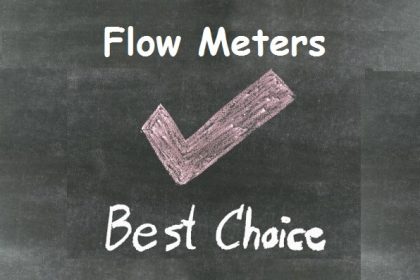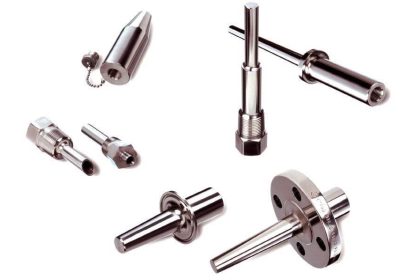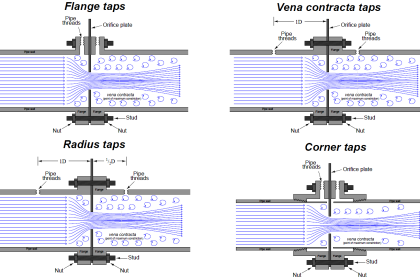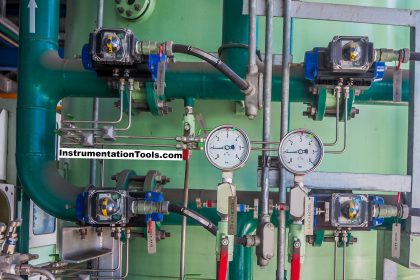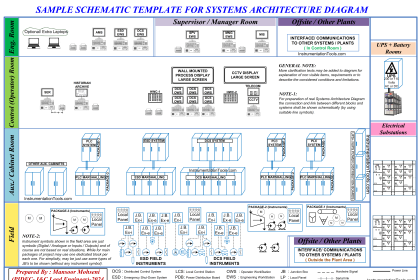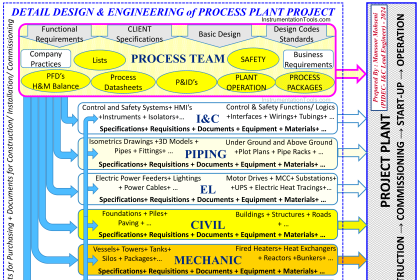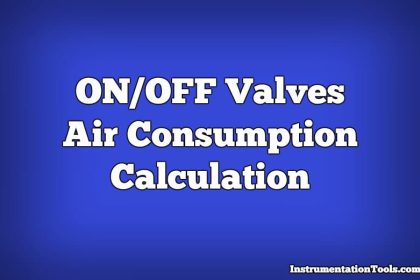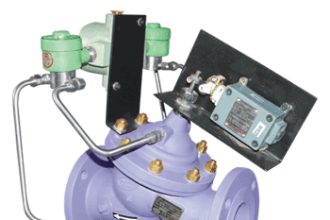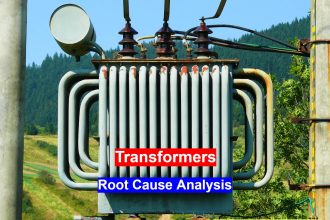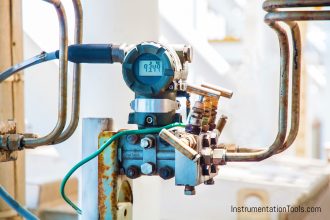In industrial automation, any system cannot function without an instrument. Be it a sensor or an actuator, instruments are the heart of an industrial application. So, when instruments are selected for a process, one of the most important documents that deals with it is an instrument process datasheet.
You will get all the detailed information related to an instrument in this datasheet. In this post, we will see the concept of an instrument process datasheet.
What is an instrument process data sheet?
An instrument is desired in a system to either sense a process parameter or control a process parameter.
For example, a temperature sensor will be required in a tank to measure the tank temperature. This measurement can then be used further by some controllers for controlling an output which is maintaining the tank temperature. In such a case, the sensor will act as a feedback for the control element. The temperature sensor here is an instrument and also the control element which is also an instrument.
To select the right instrument for a process, if a vendor is proposing some, he needs to give the required information to the customer so that the instrument will be verified and selected. This data will be entered in a document called instrument datasheet.
An instrument datasheet is a document that contains detailed information about the instrument as to what it is made of, what is the model number, what are the electrical specifications, what are the environmental specifications, what are the physical dimensions, what is the resolution and accuracy of the instrument, etc.
This makes all the tasks of a team including design and engineering, supply chain, project, and maintenance, easier to interpret and understand the system. Once this document is prepared, a customer can get a brief overview of the instrument and do the ordering accordingly.
Why is an instrument process data sheet required?
The overall engineering from design to supply chain to project to installation and to maintenance becomes easier when the engineers know the exact performance of the instrument and will be able to interpret it at any stage when required.
An instrument forms the basis of other documents in engineering like control philosophy (because it decides how the logic will work according to instrument specifications), IO list allocation (because you can decide whether the instrument will be DI/AI and DO/AO), P&ID (because you can design the necessary piping and other component placement and even vice-versa, you can select appropriate instruments from the P&ID), and communication requirements (because higher-level automation programming requires instrument data in soft form for advanced work and quick troubleshooting).
Because the document covers all instrument details, a customer can inspect the site engineering team and command them for any pending specifications if not covered. This can make the commissioning work more reliable.
How to prepare an instrument process datasheet?
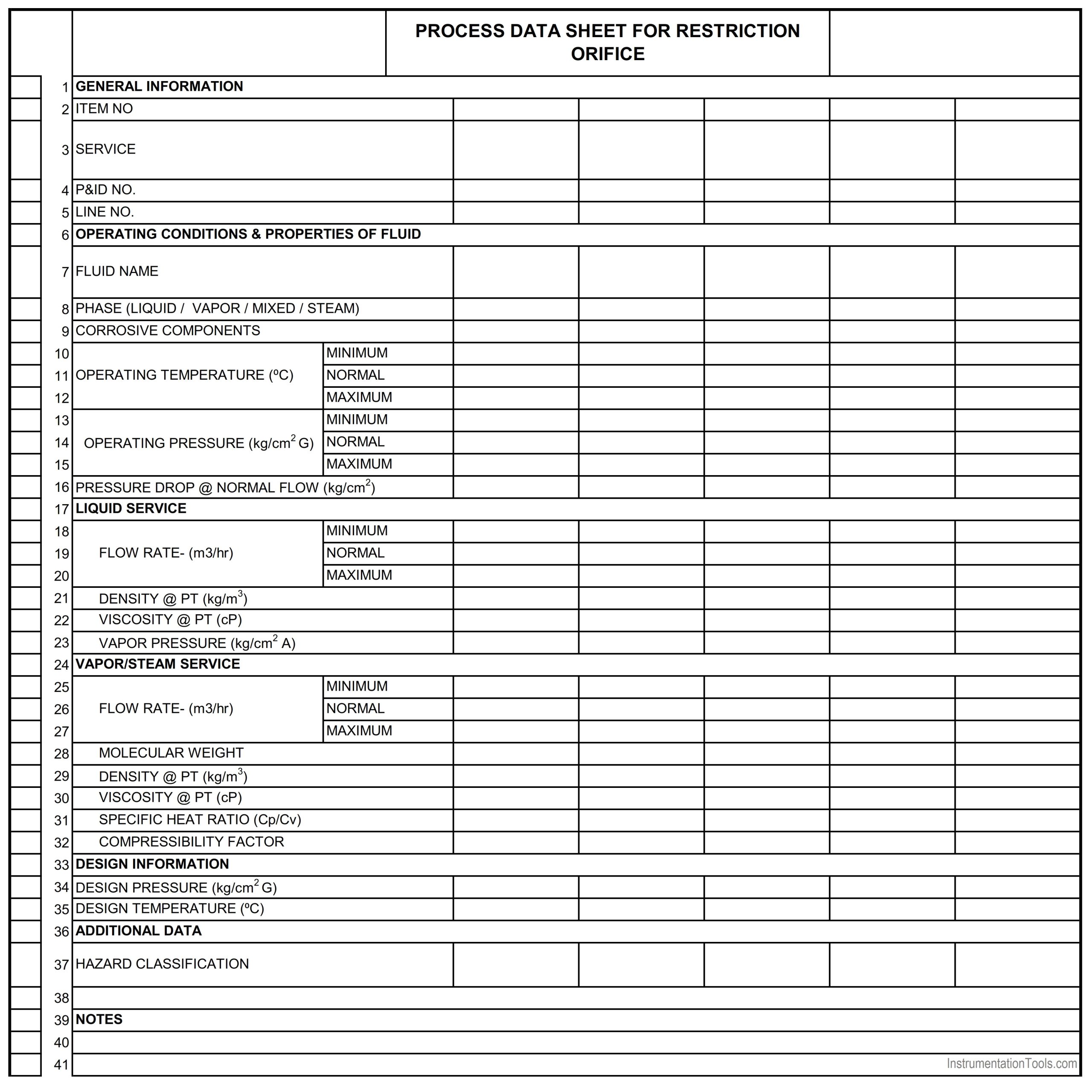
The first step is to gather all information from the required sources. This includes data from P&ID (because it shows where the pipe is going, what is the pipe material, what components are connected in that line, and what will be the role of that instrument in the overall process; which helps in selecting the right instrument), process parameters (like the media which the instrument will cater to, the name of the media, it’s properties and the tolerable range of the media parameter), getting a detailed analysis of the heat and mass transfer of the process for determining energy calculations, getting nearby environment data for deciding whether it is hazardous or non-hazardous, whether some data will be required in communication form for higher-level controller and what safety standards need to be followed.
Once the prerequisites have been cleared, the next step is to gather the information about the instrument you are selecting.
Refer to the most general ones that are mentioned for selection:
A] General – Instrument name, instrument number, location in P&ID, and process name location.
B] Physical – Dimensions, the material used for construction of the instrument, any special accessory if required along and instrument orientation.
C] Process Parameters – Ambient temperature working range, hazardous area classification, fluid name, fluid state, and operating pressure and temperature.
D] Sensing Element – Detector type, differential span, and material of the element.
E] Transmitter – Body/flange type, mounting type, vent/drain type and material, gasket material, power supply rating, output signal type, communication protocol supported, indicator, and wiring type.
Once all the details have been gathered, you have to fill in the details in a chart format given either by the customer or according to your standards. This will prepare the IPDS document for you. Carefully review it and share it with the concerned stakeholders including engineers and project team members for any comments.
In this way, we saw the concept of an instrument process datasheet.
Read Next:
- How to Read the PLC Datasheet?
- Instrument Loop Test Requirements
- Design Documents for Project Architecture
- Vendor Documents for Project Architecture
- Turbine-Compressor System Architecture

